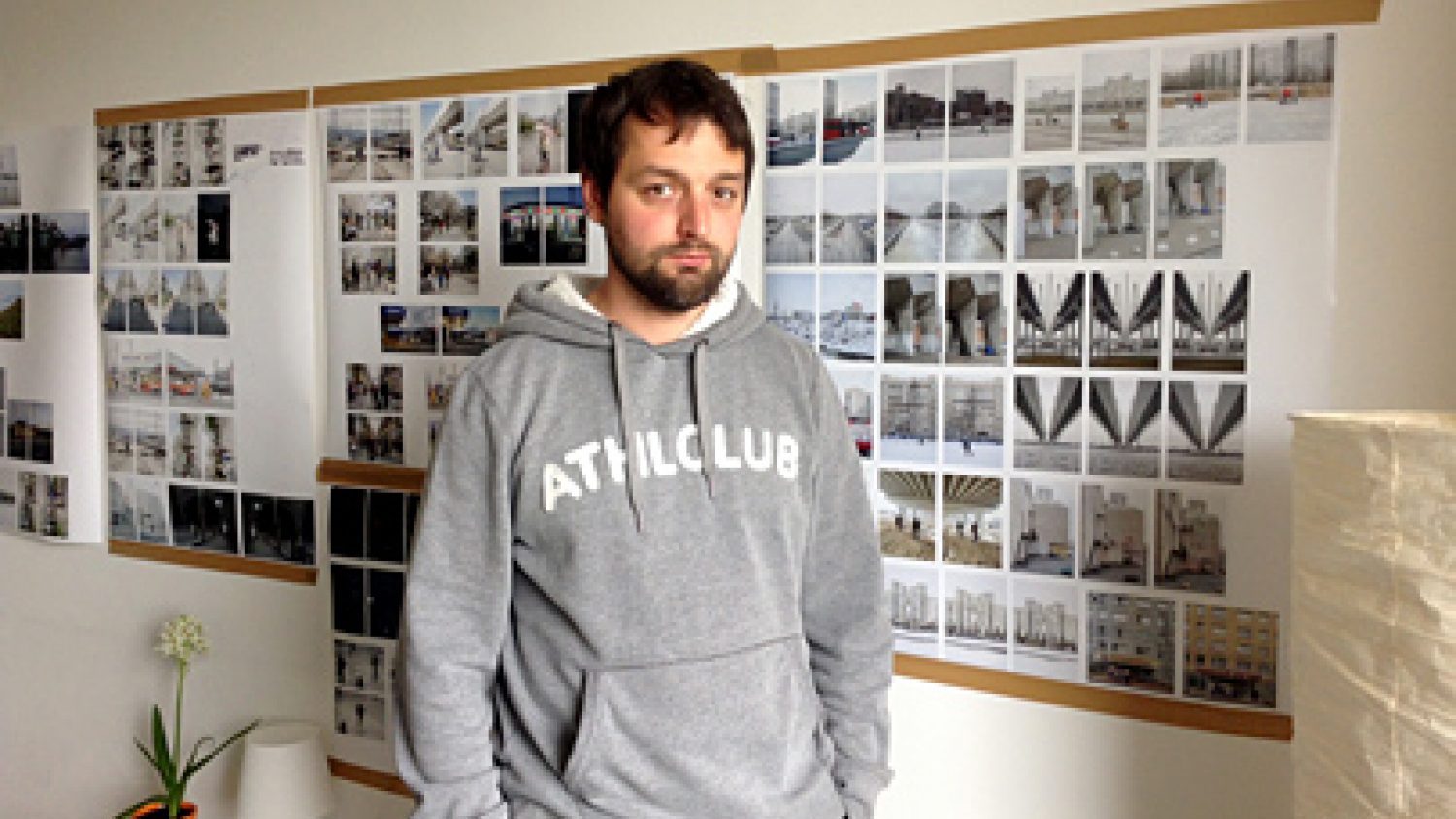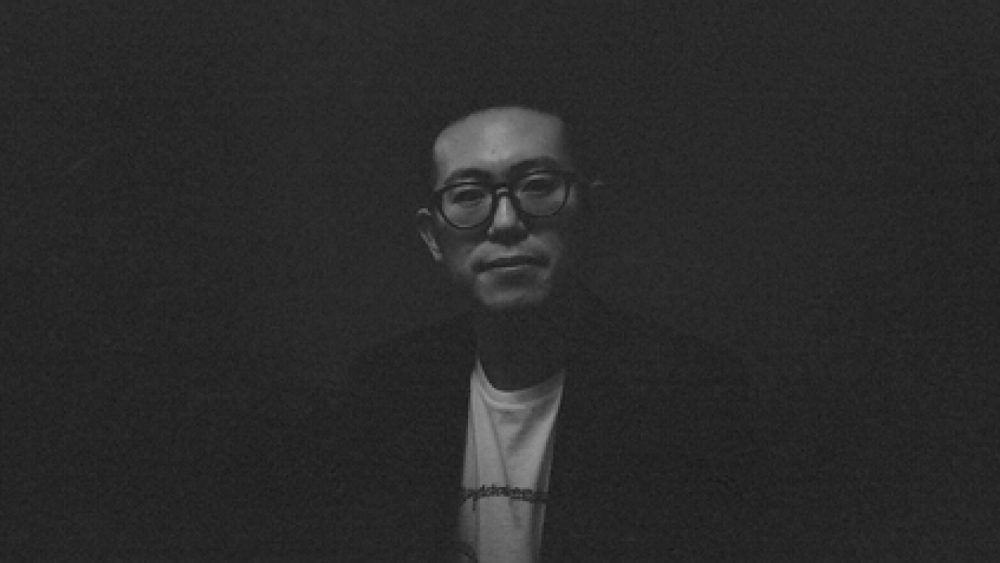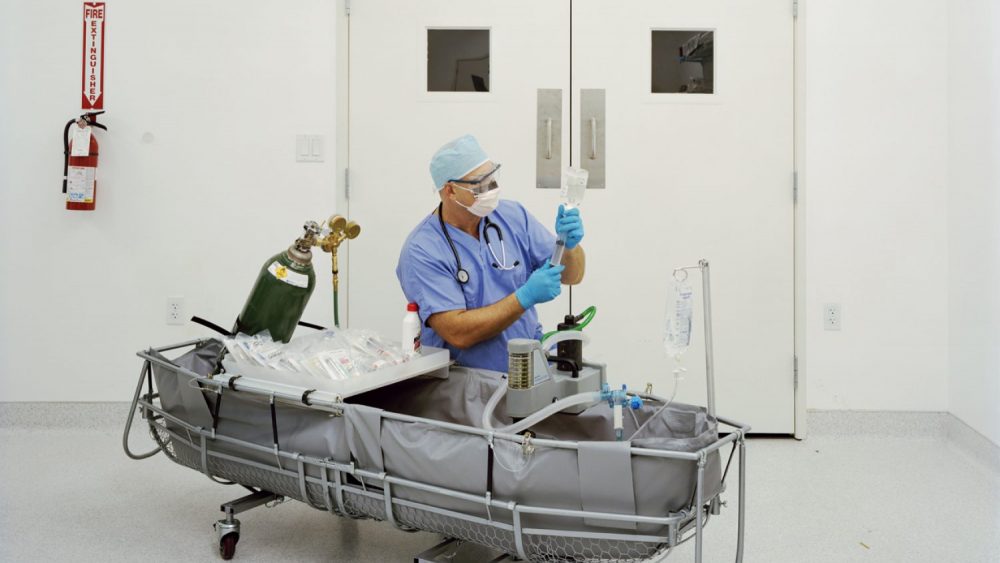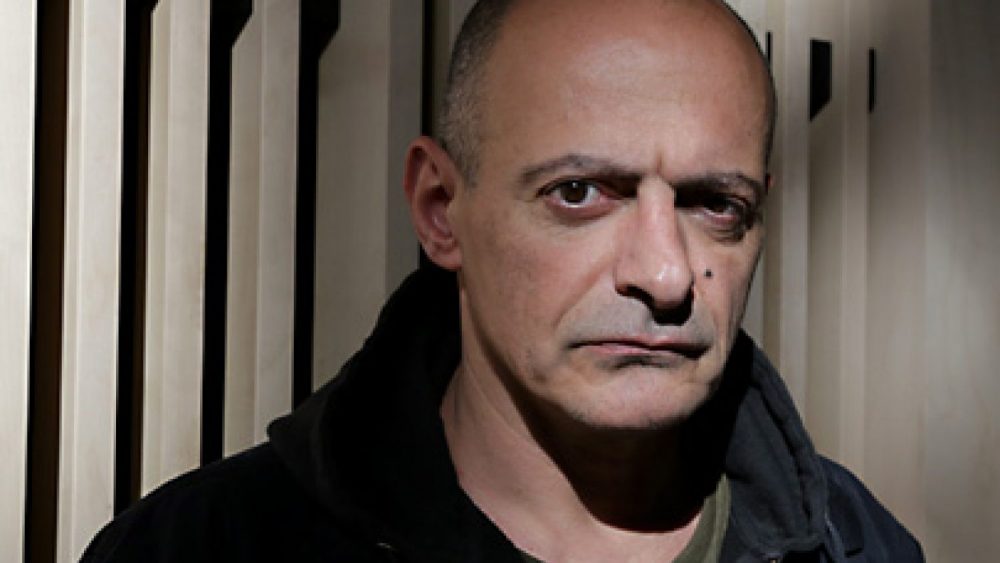An Interview with Alexander Gronsky
The work by Alexander Gronsky (1980) created this spring as part of the project Japan Through the Eyes of Europeans/ Japan Today will be exhibited from 23 May till 15 June at the Ziemeļblāzma cultural palace in Riga, Latvia. They differ quite radically from the images that have been associated with Gronsky so far. He has swapped the medium format film camera for digital, applied a snapshot aesthetic and replaced a story on a certain place with an academic interest in the perspective of photography and the perception of the urban environment. One wall of his living room has been covered with prints. “I want to try various exhibition formats for these works, emphasizing materiality and spatiality,” says Gronsky.
The Japan Through the Eyes of Europeans project was started in 1999. Every year the project brings several European photographers to Japan, providing an opportunity to picture Japan according to their perspectives. So far 56 photographers have photographed 35 prefectures in various districts of Japan. The project is implemented annually with the aim of photographing all 47 Japanese prefectures. After each stage, a catalogue is published and exhibitions held in Japan and Europe. This year, Swedish photographer Nina Korhonen also took part in the project and her works will be exhibited at Ziemeļblāzma next to Gronsky’s images.
Opening – on the 23 May at 16.00 in Ziemeļblāzma, Ziemeļblāzmas 36. Curated by Mikiko Kikuta. The show takes place in the framework of Riga Photomonth 2014, part of the series of events in Riga, the European capital of Culture 2014.
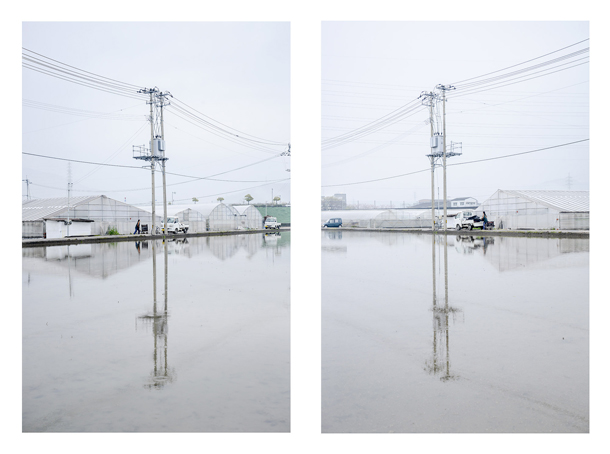
How come you were invited to participate in Japan Through the Eyes of Europeans?
I guess it was in autumn when the curator came. We met for an hour and she wrote back after a month. Everything happened really fast. They have pretty good taste (laughing). Many photographers I like have participated in the project. Therefore, of course, I am very grateful and happy to be invited.
How long did you spend in Japan?
One month. As normal European tourists, we managed to experience the sakura blooming time.
Was the prefecture where you had to take photographs chosen by the organisers?
Yes, in the beginning we discussed two different places, but eventually the final decision was theirs.
Where did you go in the end?
To Kochi prefecture. The city of Kochi is located 800 kilometres south of Tokyo. It is very provincial. There is no industry, nothing. Fishermen, rural farming. Afterwards, when we drove around Japan, I thought that Kochi was quite representative – a small Japanese city similar to all the rest.
And what is the project about?
I wasn’t sure till the very last moment. In winter, January, I started a new project in Saint Petersburg, which at that time I had not articulated for myself. I decided to continue it in Japan, testing whether it could be transferred to another landscape using the same approach. Initially I had no images in my head, the idea was abstract – is it possible to take two photographs in such a way that they would exclude each other, so that they could not exist simultaneously or would take place in two kinds of parallel realities. So that there would be a feeling that one and the same event is happening, but it is not possible at one and the same time. When I started to photograph, everything changed. There is not a single approach. I am trying to change the algorithm of photographing and not to repeat the same techniques. It is all swirling around this, I don’t know … impossibility. Ideally, my intention was to create confusion. So that when you look at the photographs, you do not understand whether it is possible in reality or…
… or it has been staged?
Yes, yes. Here nothing has been manipulated with Photoshop. But I don’t think I will draw everybody’s attention to this fact. I will leave the spectators in doubt, it doesn‘t bother me. I will let them ponder, whether the images have been pasted or choreographed or not. I think I will add staged images in the future, too, but at the moment it is the purest street photography. In 70% of the cases we are two people who photograph.
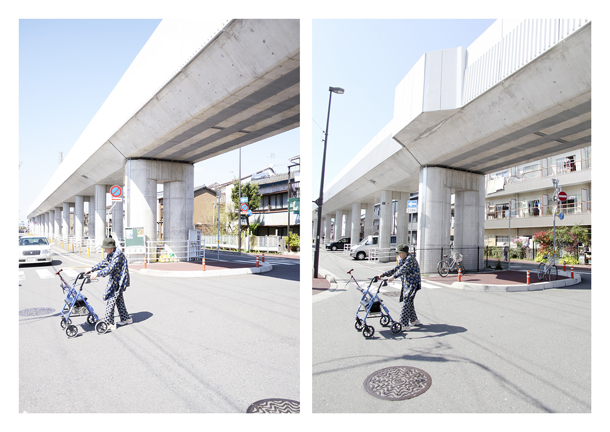
Tell us more about the technical process! How does it take place?
Methods differ all the time. Very often we take a picture of one and the same situation from various angles. There are no complicated setups. If you look carefully, you can understand how everything has been arranged. If you photograph for an hour or two at the crossroad, you can find very weird and almost unbelievable coincidences in the images. If you take 1000 photos you can catch a moment when all the people stand in certain postures and after a few seconds you have a shot with all the same people in the same positions, but in a different place. It is one of the alternatives. Everything turns into a game. You can be thrilled and sometimes have great fun.
Will there be a title?
For the time being, the project functions without a title. The project from Kochi is automatically titled Kochi, and I’m fine with that. Yet, the larger cycle has no name at the moment.
Will you continue working on the larger cycle?
Yes, yes.
Has the time come for working in Latvia?
Definitely. I think everything will take place spontaneously. All my previous projects have been tied to a certain place, which has been hugely restrictive – when you can go, how long you can work. Now I can go out on the street and photograph, irrespective of the location. Taking into account that I often go to various places because of my job, there are automatically some points on the map where I can work.
Which will be the next places?
Now I will take photos in Latvia, afterwards I want to go to the Middle East. To Dubai, Baku, if everything goes as planned. Somewhere I’ll go for work. Maybe in Saint Petersburg and Moscow, or in some provincial town in Russia.
Do you want all these places to look alike?
Not alike. I am interested in a project, which is heavily focused on landscape in various places, but is not referencing the places, but the space as such. It is not about Japan or Saint Petersburg. It can be any place. The meaning is not hidden in the narrative. A while ago it was traditional to publish books with illustrations in several volumes. First, the text part was printed, afterwards the illustrations, and then the illustrations were placed inside as a separate notebook or they were separated and placed in different books. I want to play with this subject – to provide illustrations for a non-existent text about space, landscape – but the text is missing and only schematic images have been left. This is how I am trying to explain this project to myself.
After Pastoral I intuitively wanted to work on a project that would not be related to a certain place or aesthetic. I wanted the idea to develop on its own during the process of photographing. In Pastoral it was a big problem. The process was so long that at some point I had to discard the old photographs, because they did not match the new ones. It became too complicated.
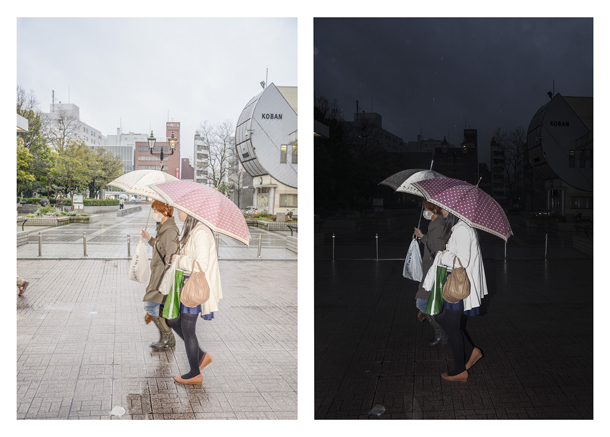
This is your first personal project that you have shot with a digital camera.
Yes, but for this one there were no other alternatives. I am not referring to aesthetics as much as to the technical side. You have to take thousands of photos, very often it is necessary to view them straight after the shot, in order to understand whether the image is working and whether there is symmetry.
How was it to change to a digital camera? When we spoke in autumn, you said that no one really had used the potential of digital technologies to the utmost.
This project was an answer to this question. Here, the use of the digital camera seems to be justified, even more – most likely, this project would be impossible without digital technology.
I remember you once said that when you take one and the same image with on film and digital, you can be sure that the image taken on film will be the image that you like.
The way I’m used to, the way I like it, yes. I have the same objections against video. I still love the aesthetics of the classical Hollywood films. I see a huge difference between digital and analogue. I certainly must be one of those who prefer filters on the new Hollywood films, in order to make them look more similar to the ones shot on film. It must be a problem of our generation. People, who are born with HD video, will have a different attitude towards the image. There are things I like in the digital image and there are things I don’t.
The aesthetic of the new project is also quite different from what we are used to associate with a classical Gronsky. It’s more like a snapshot aesthetic, you use a flashlight.
Yes, the aesthetic, like the geographical place, is not important to me in this project. Of course, it is clear that I cannot completely avoid my own aesthetic preferences, but the choice of the place is rather arbitrary. In the beginning we looked at where it is convenient to cycle around the hotel.
Have you been influenced by the works of British photographer Paul Graham?
Yes, definitely, the influence can be spotted. It’s weird, I actually like his project Shimmer of Possibility. With The Present I was more careful, but in the end it is the influence of The Present that can be seen in my works. Though I transferred this subject to the context of a game, some kind of a visual rebus. But then again I would not like it to call it a rebus, because in some places it is very obvious how it has been done.
Are you working on any other project at the same time?
This year I will show my war reconstructions for the first time ever. Yet, I have set impossible restrictions for myself. I want it to be a war reconstruction in Russia or somewhere in the former Soviet Union, because the use of the swastika symbol is prohibited in most European countries. You must have winter with snow, a greyish landscape, preferably in foggy weather (laughing). In the first year I was lucky. I took five or six reconstructions in one and the same landscape – with fog, snow and endless fields. Everything that I photographed later in spring and summer, does not fit it. A blue sky and green grass – it looks like coverage from a film shooting location. This winter I was lucky once. Now the Second World War has been accompanied by the Afghan War, which adds another element to the series – total farce. Shahidas with sniper guns lead a horse. I have decided to leave it as it is, because it is hard to arrange even eight triptychs for a display. I am referring to the idea of the war diorama, which was very popular in the 19th century. Winter is better for taking photos, that’s just the way it is. But in the new project all this does not matter, there is no difference whether the photo has been taken during daytime or nighttime, winter or summer. You can think of it as a game and play. I don’t know yet where it will lead.
